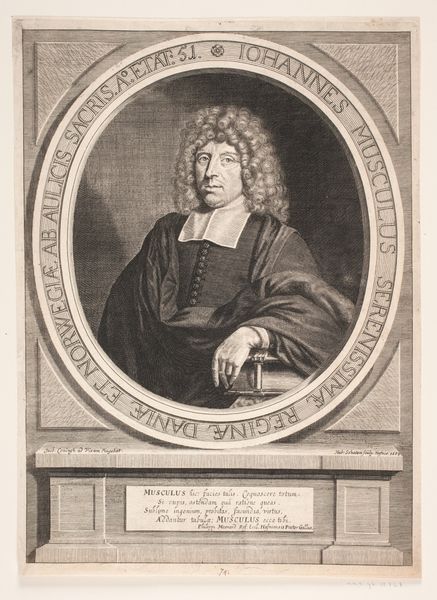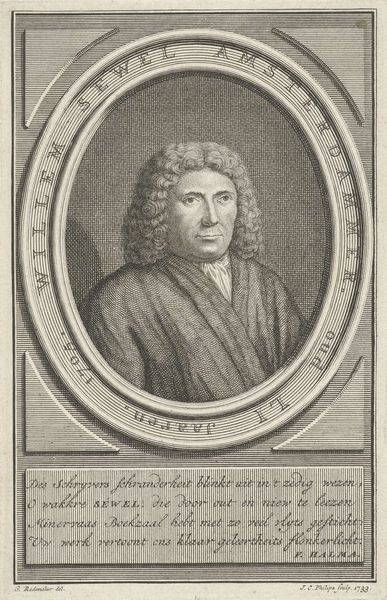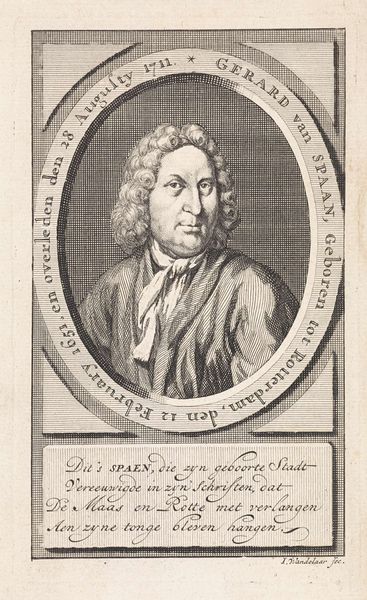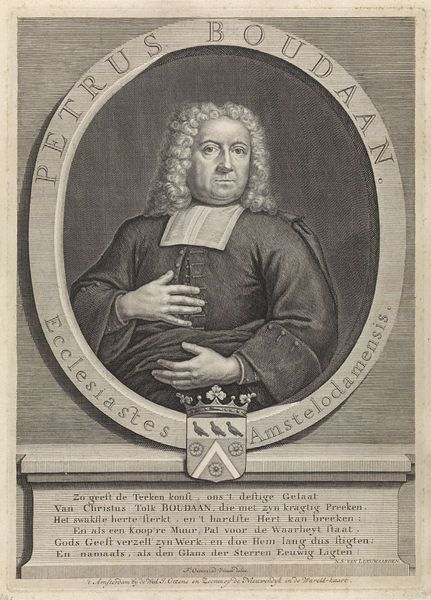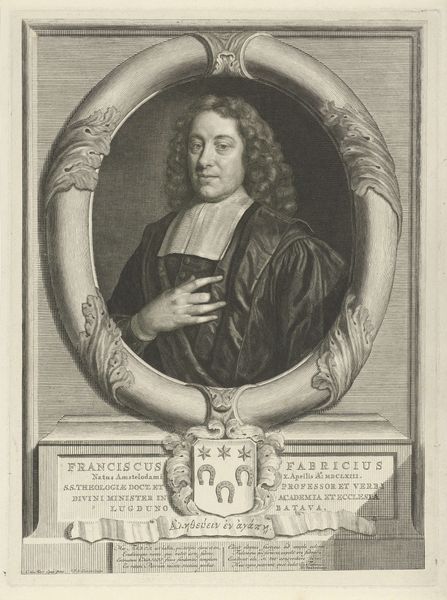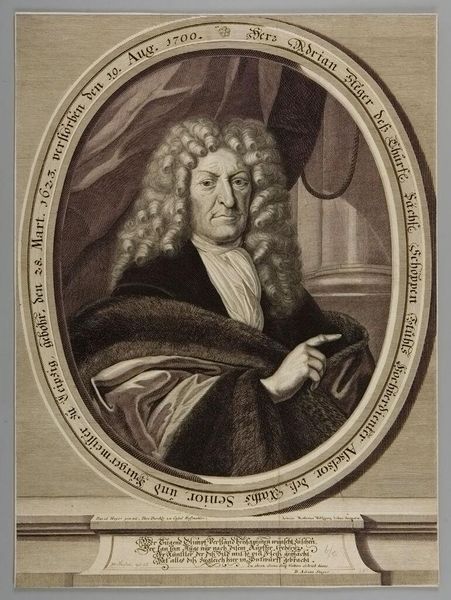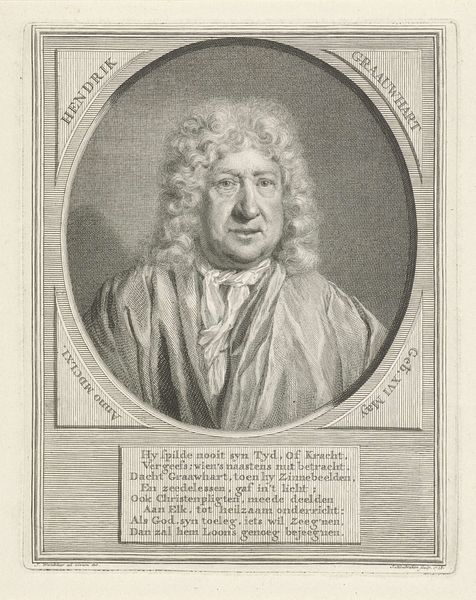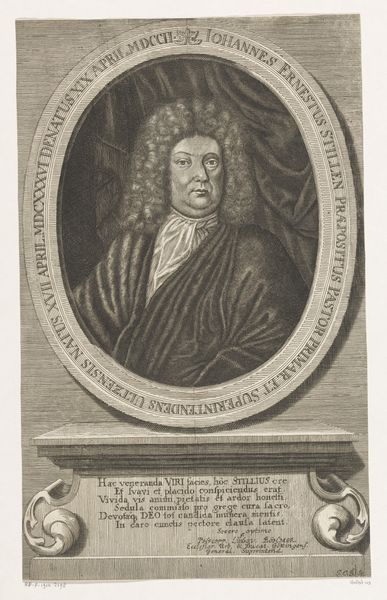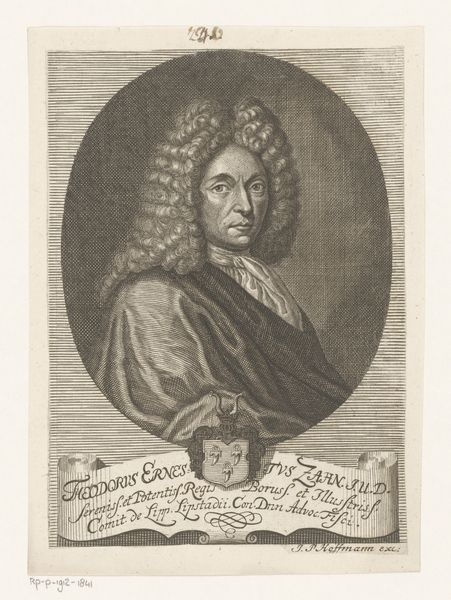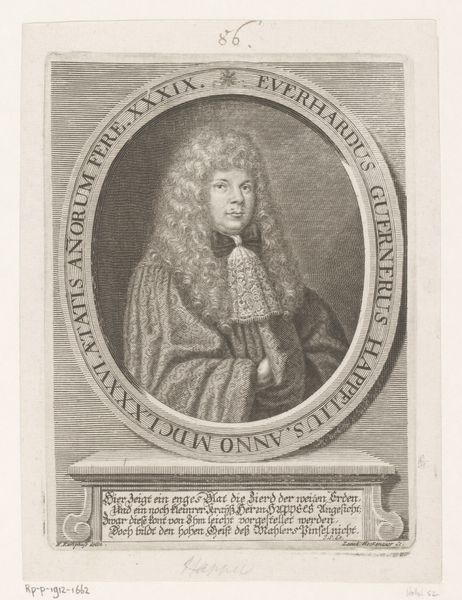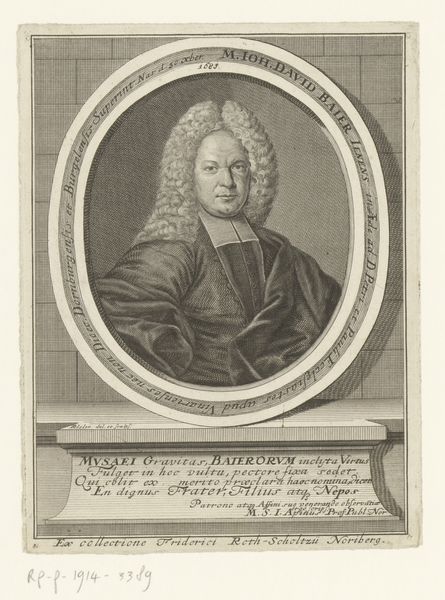
engraving
#
portrait
#
baroque
#
dutch-golden-age
#
history-painting
#
academic-art
#
engraving
Dimensions: height 320 mm, width 226 mm
Copyright: Rijks Museum: Open Domain
Frederik Ottens made this print of the publisher François Halma, likely around 1722. The image raises questions about how the cultural elite used portraiture to reinforce social hierarchies. Here, the oval frame and elaborate inscription elevate Halma, a publisher and scholar, associating him with classical learning and contemporary Dutch society. The Latin inscription and refined dress code are visual cues to the sitter's social standing and intellectual prowess. Made during the Dutch Golden Age, a period of economic prosperity and cultural flourishing, portraits like this served to legitimize the power and status of the sitter within specific institutional contexts. To fully understand the print's meaning, one could explore the history of the Dutch publishing industry, the role of portraiture in early modern Europe, and the social networks of scholars and publishers in the Dutch Republic. By doing so, we can better understand how institutions shape the production and reception of art.
Comments
No comments
Be the first to comment and join the conversation on the ultimate creative platform.
